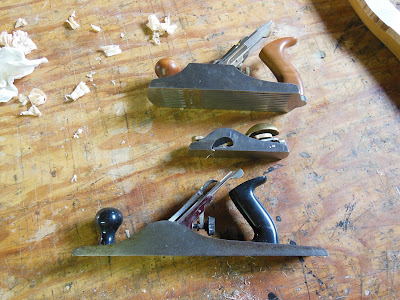Before I can remove the sound-board, I have to make a set of patterns to record the position of the bridges. I would do this even if I were not replacing the board. The patterns are made of Baltic Birch plywood and are registered to marks on the inside of the case.
I put the piano on its side on the skid-board, so that I have access to both sides. At first I thought steaming might be a good way to go, but the belly rail section came off fairly easily, as the glue was somewhat dehydrated. I ended up soaking the straight side. In hindsight steaming would have been the better idea. Below is the board almost out.
I put the piano on its side on the skid-board, so that I have access to both sides. At first I thought steaming might be a good way to go, but the belly rail section came off fairly easily, as the glue was somewhat dehydrated. I ended up soaking the straight side. In hindsight steaming would have been the better idea. Below is the board almost out.
I apologize for the poor quality of the photos so far on this post, by the time I checked them it was too late. Here are some better ones, I hope.
The thickness of the sound-board panel varies from 5.5mm to a little under 7mm. The curved longitudinal rib is laminated, vertically, from two pieces, the joint is barely visible. I don't know if they heated or steamed the wood, I doubt it, as spruce responds badly to being steam bent. Notice the interesting varnishing job on the bottom. There is a thin, wash coat of Shellac, but the rest appears to have been done with the board installed, probably at a later date.
The back of the instrument is workman-like, but not fussy, and in some areas rather hastily done, mostly Spruce, with its quarter-sawn face uppermost. The rest looks like Fir, or one of the Deals. If anyone knows what species this is please drop me a line. http://www.erard.pianosrubenstein.com/contact.html
Joints are stub tenon, or sliding dovetail. Where a bolt occurs, there is an inset octagonal hardwood plug, very nicely done








Comments
Post a Comment